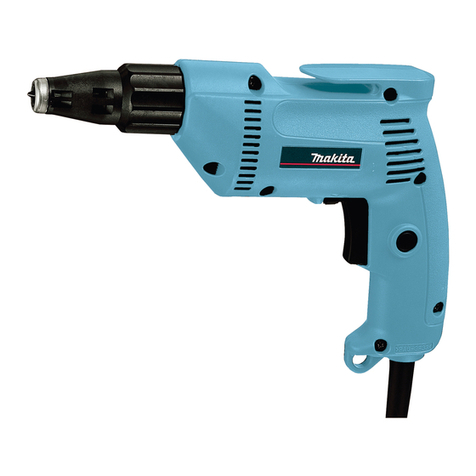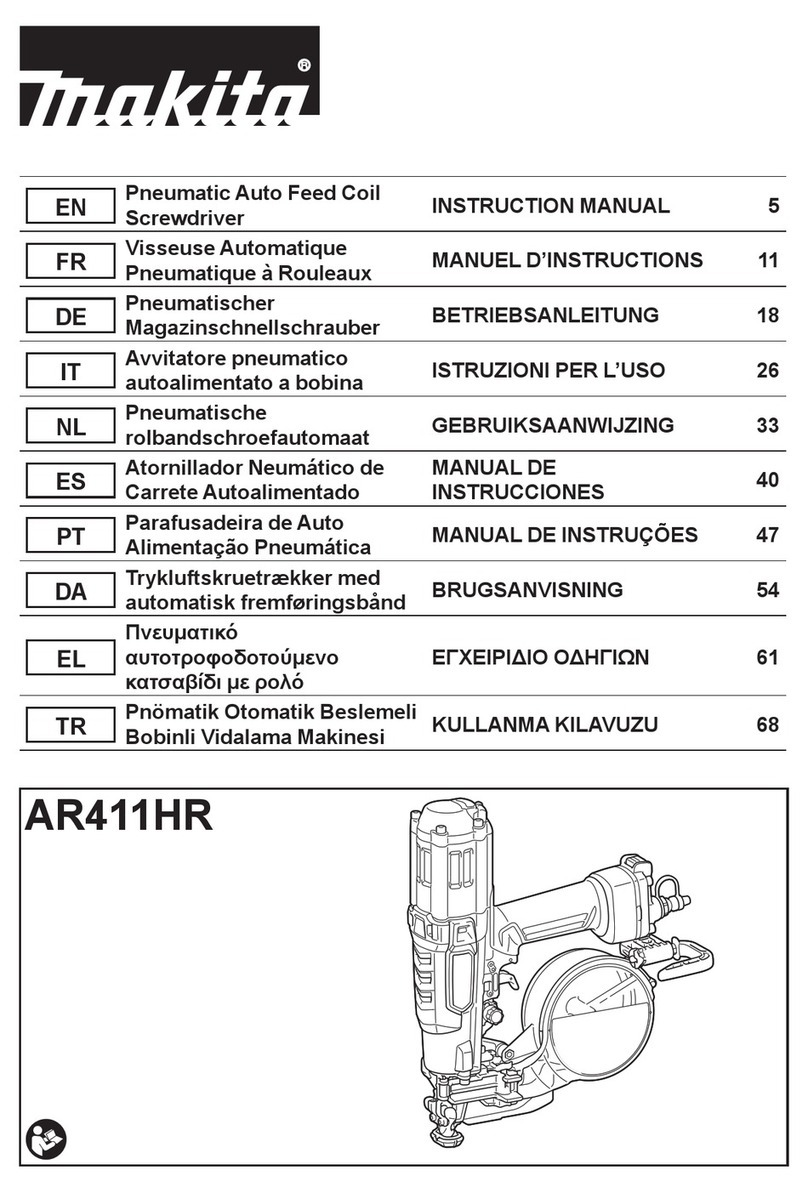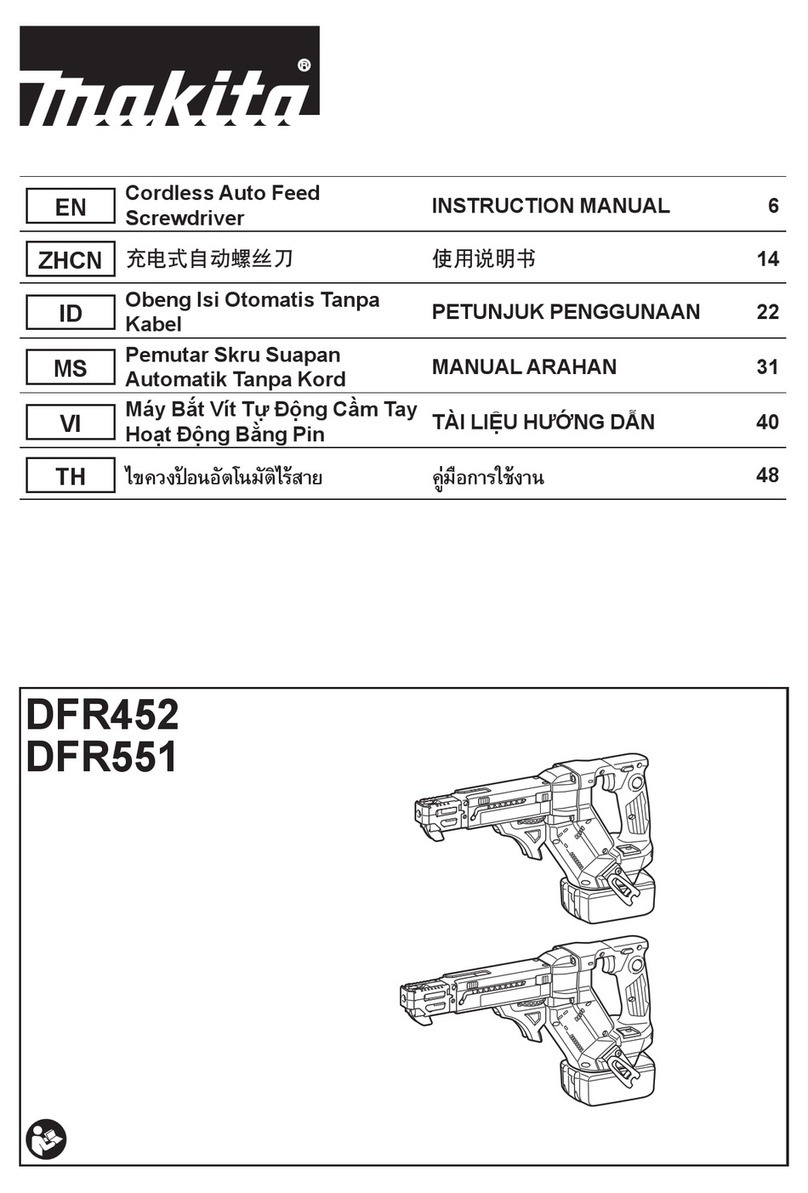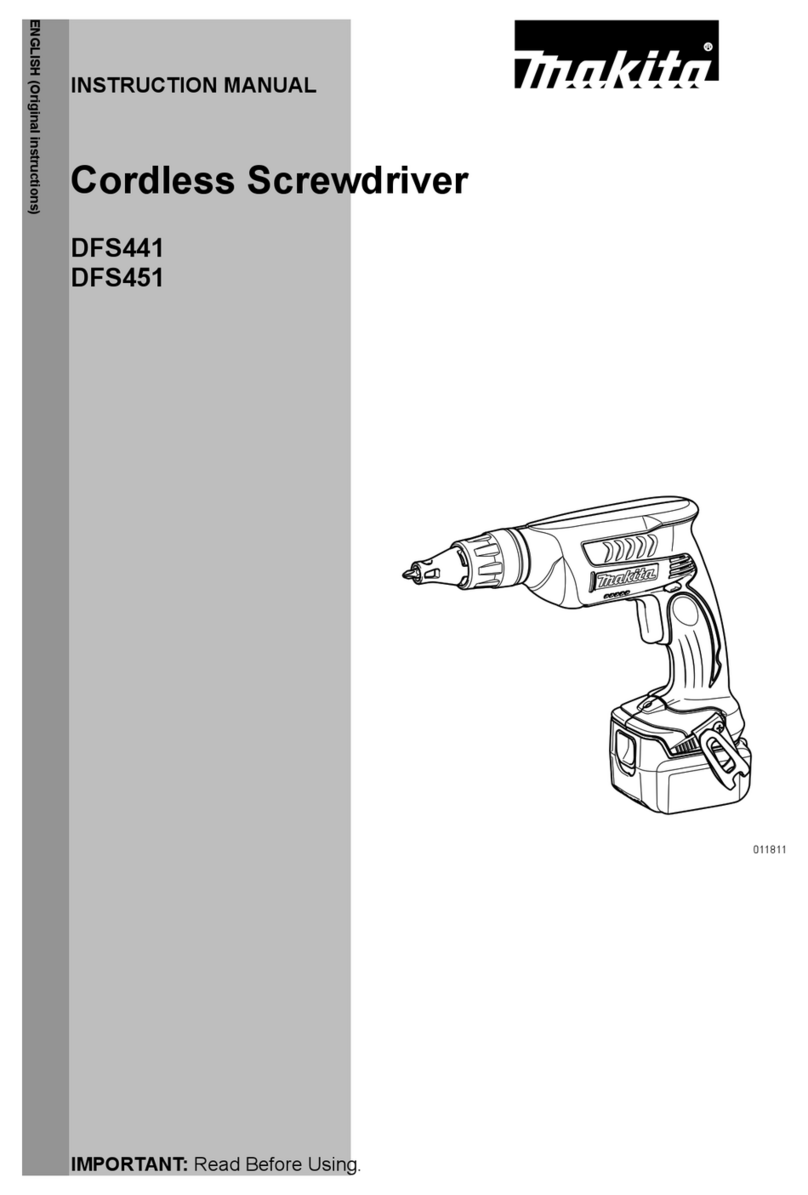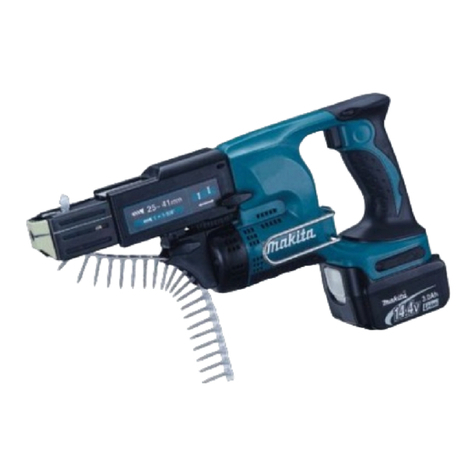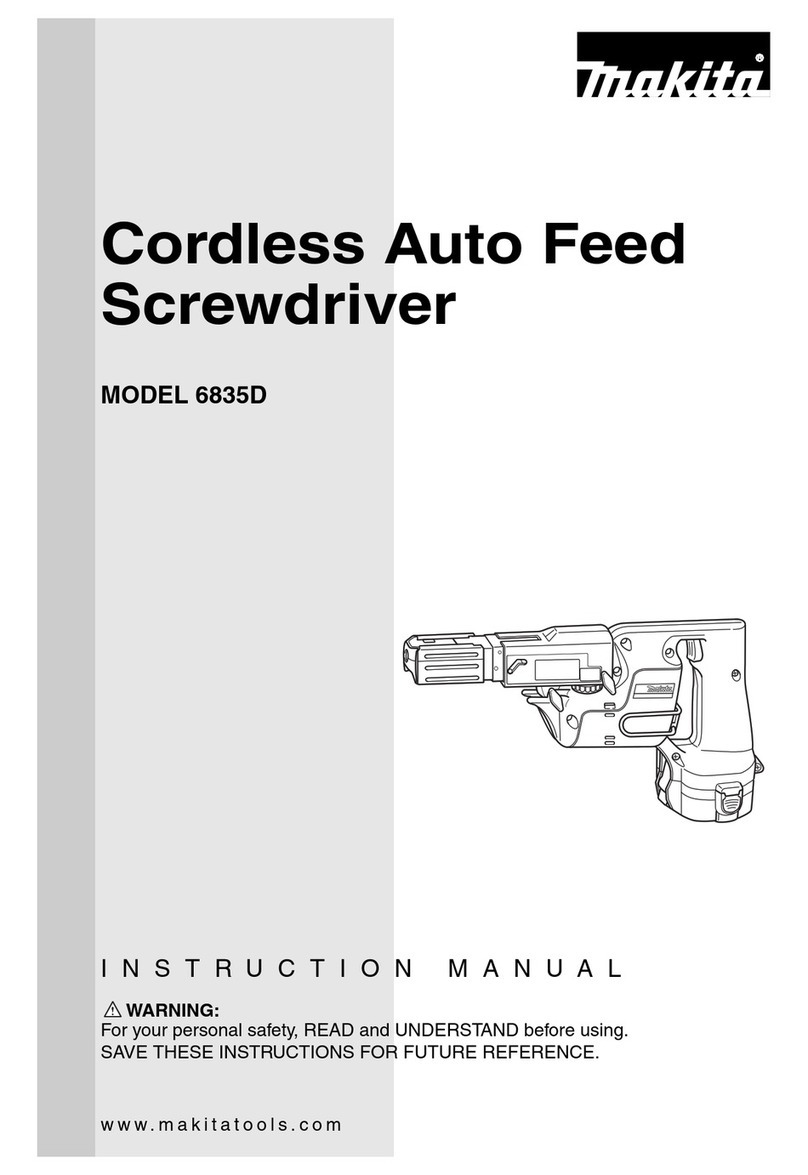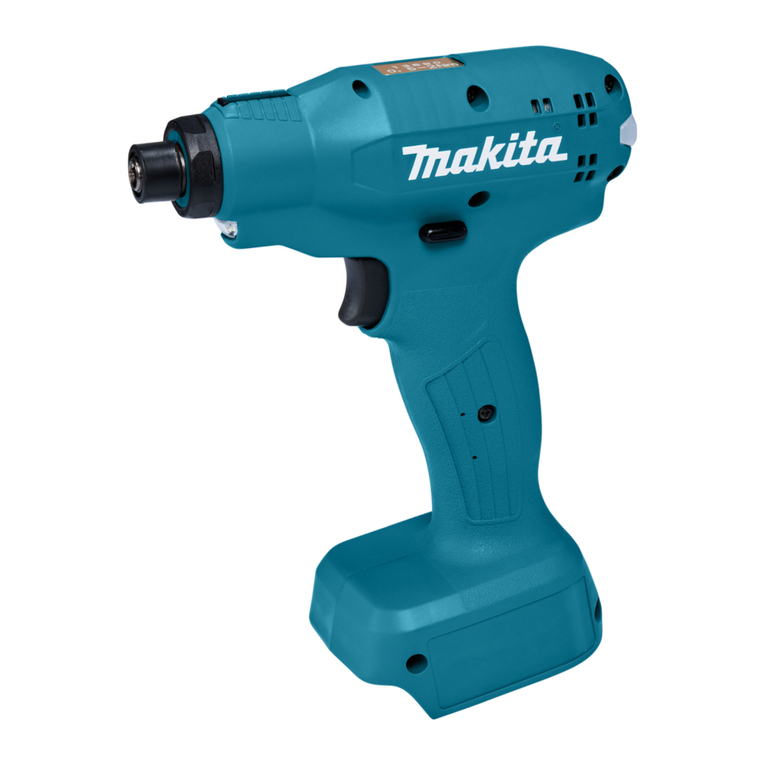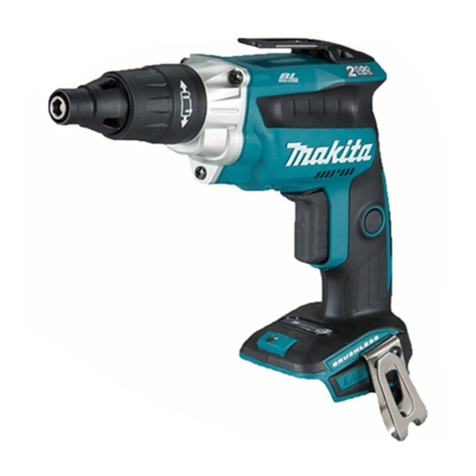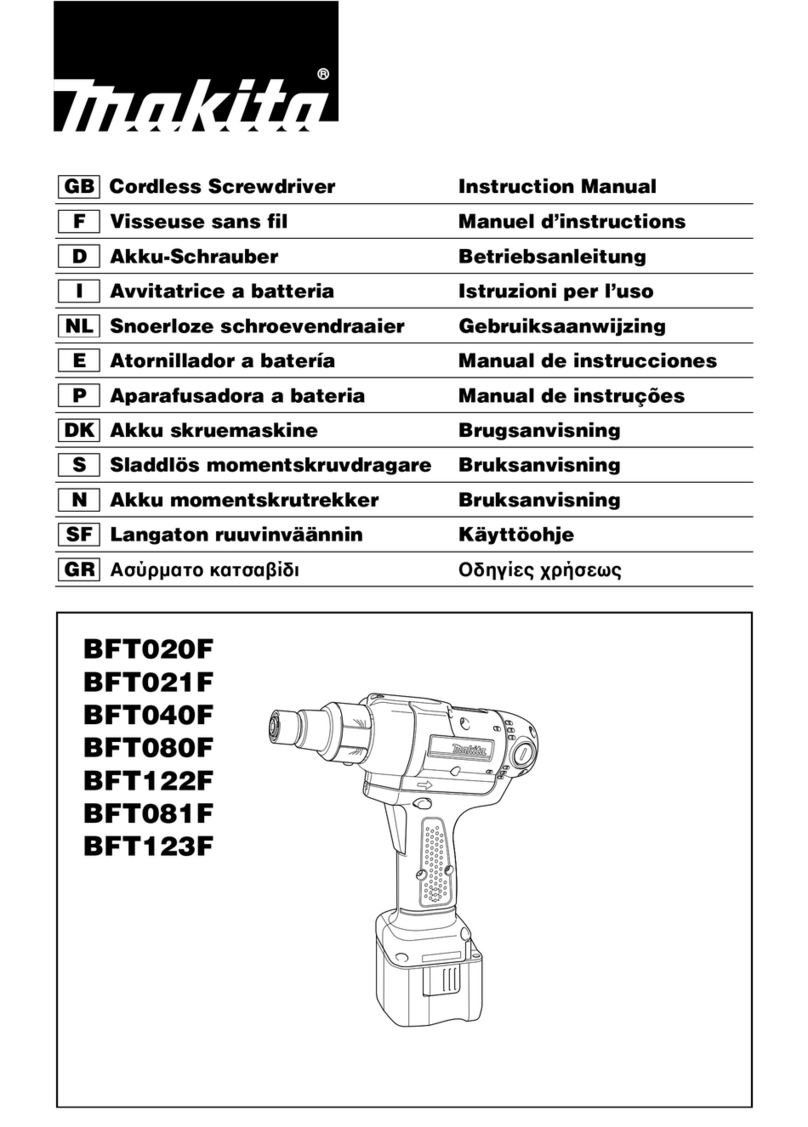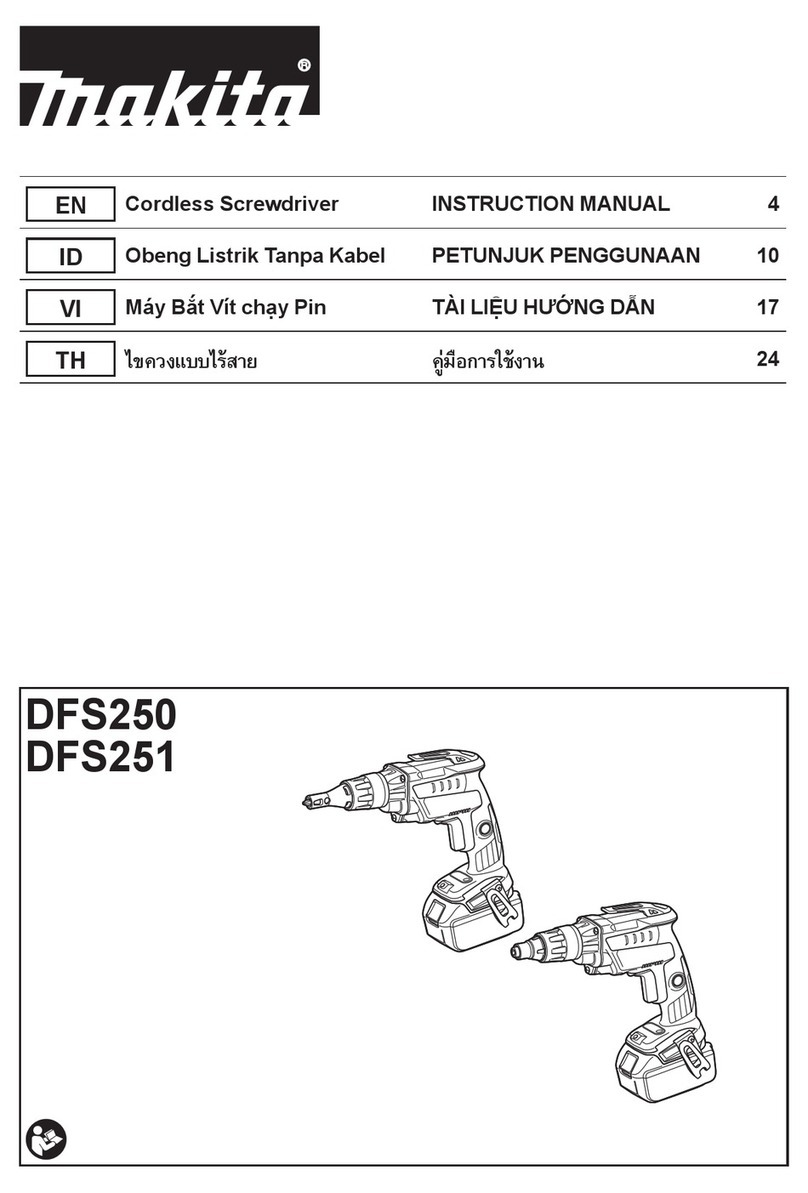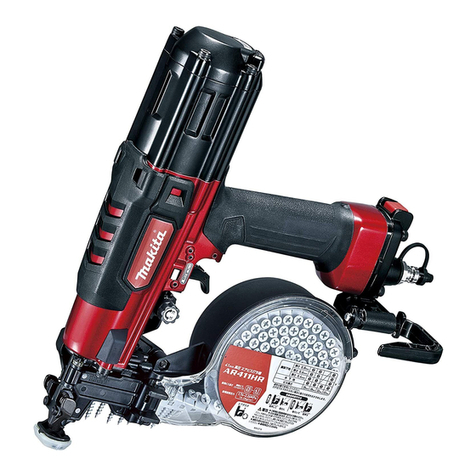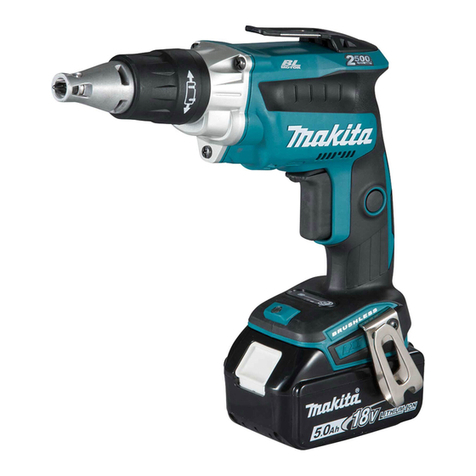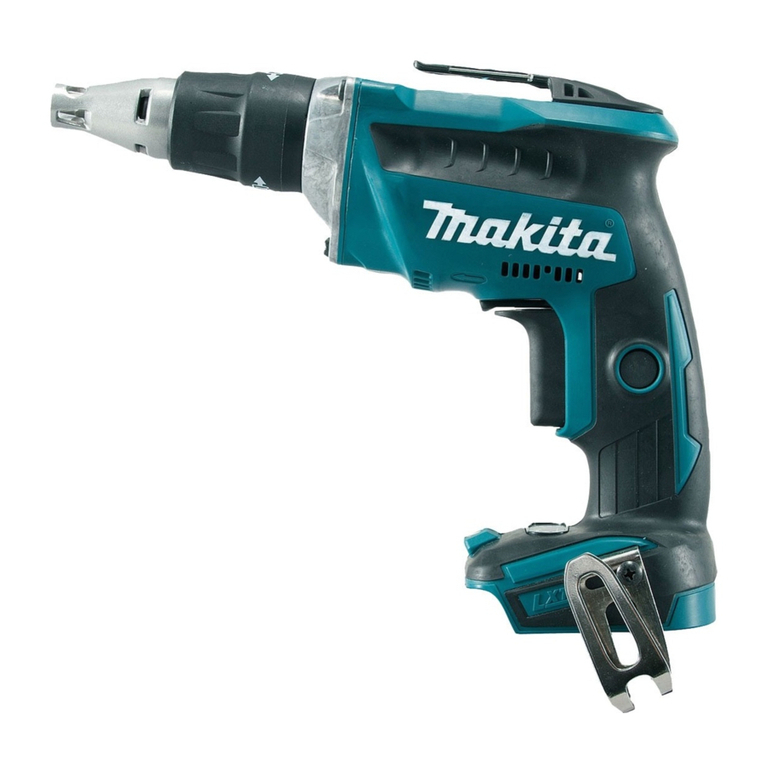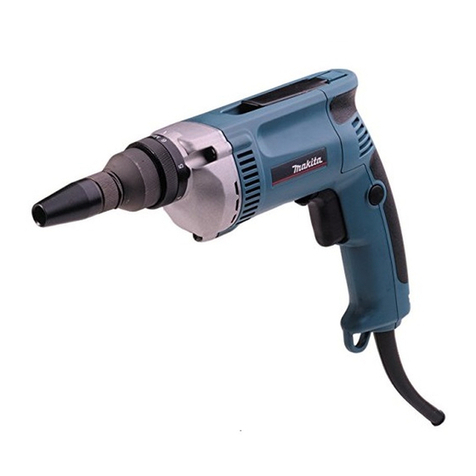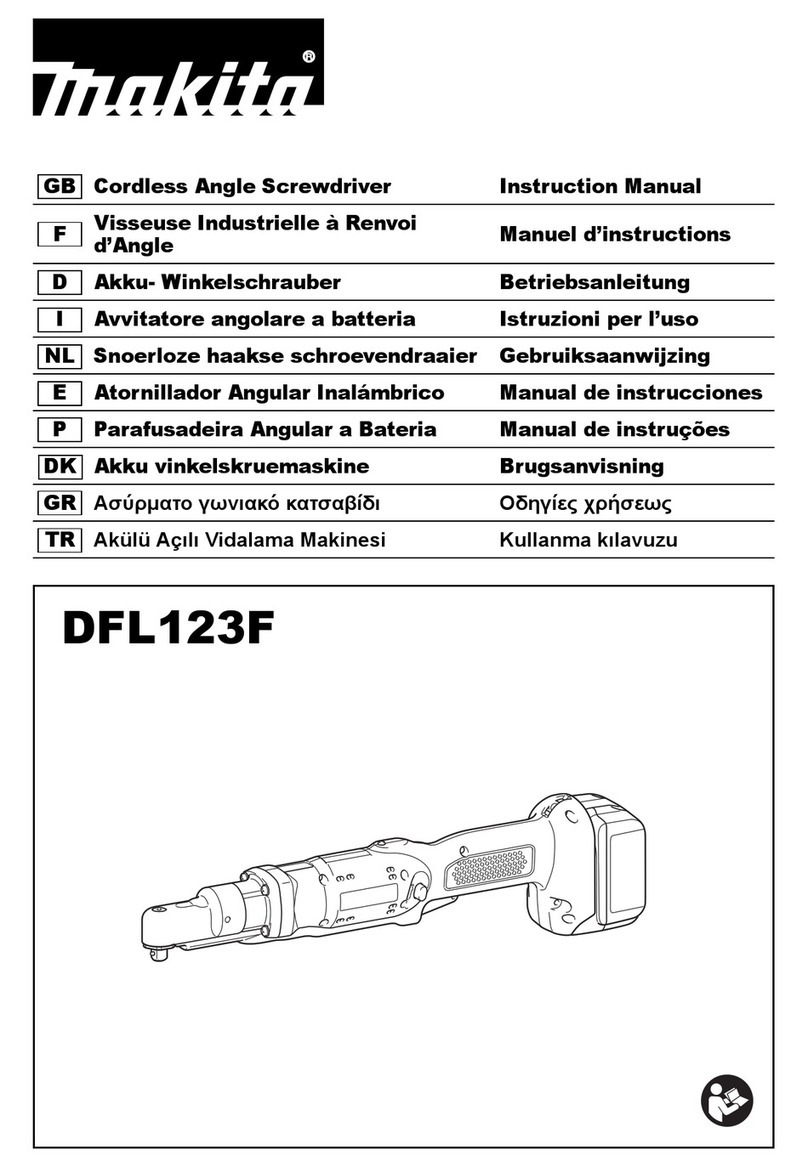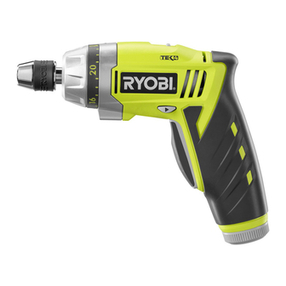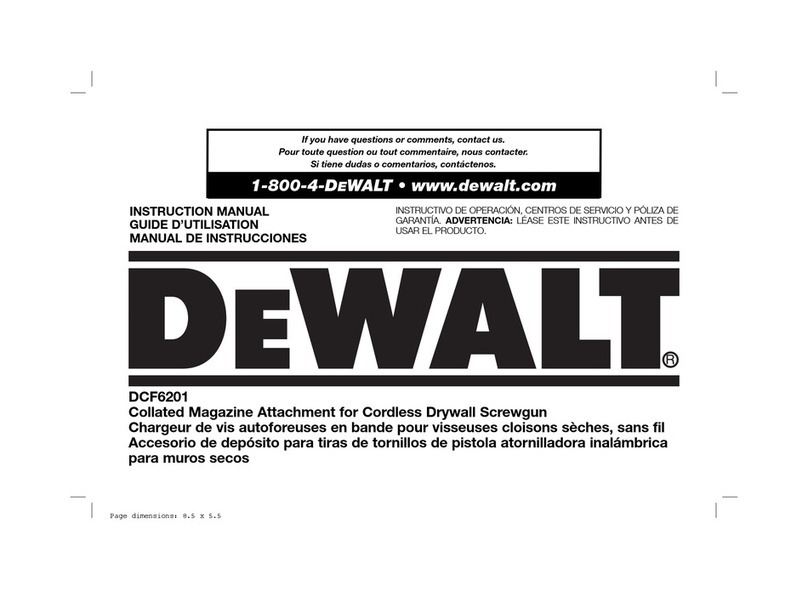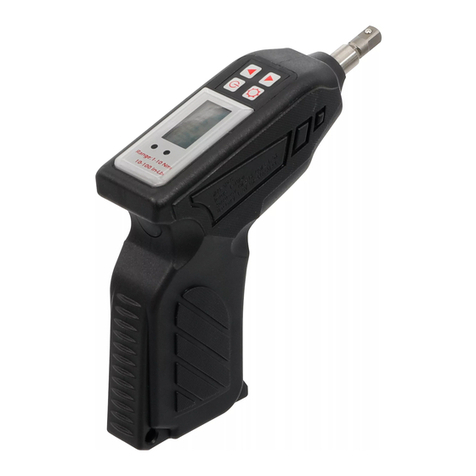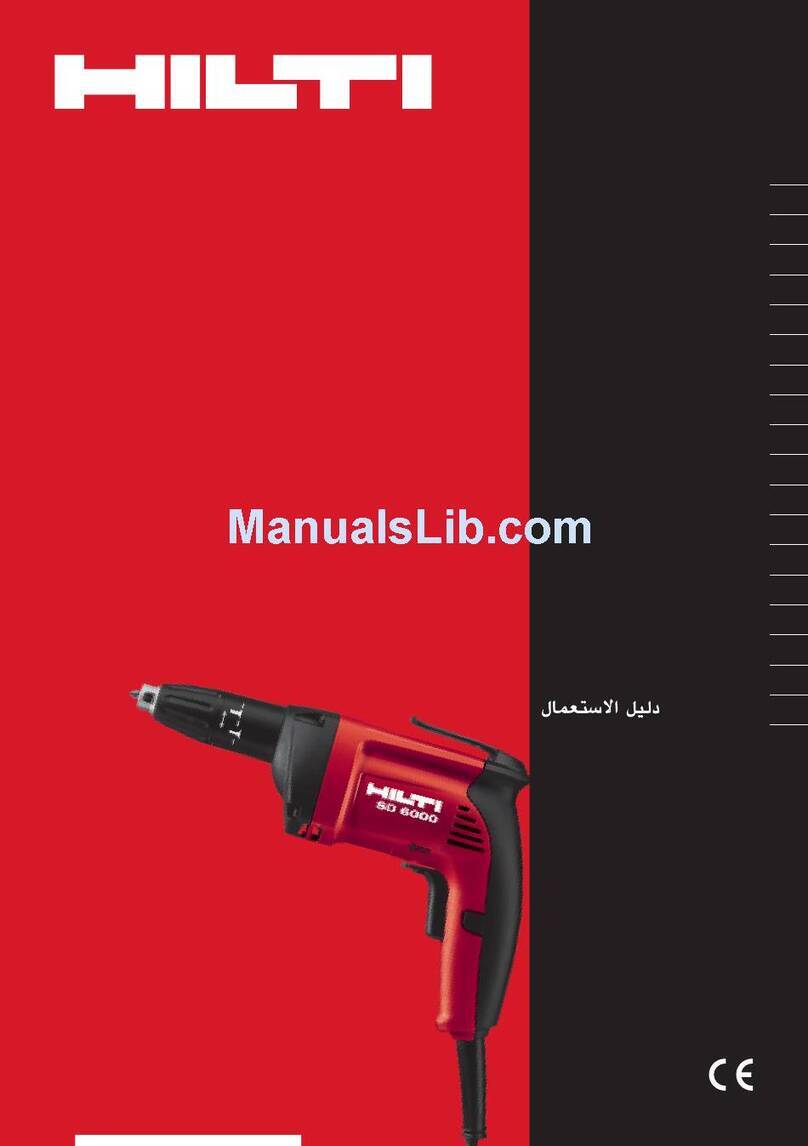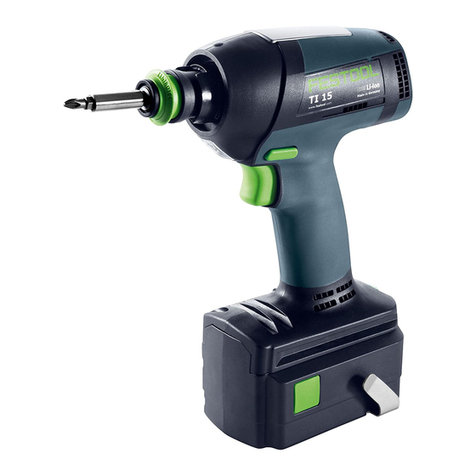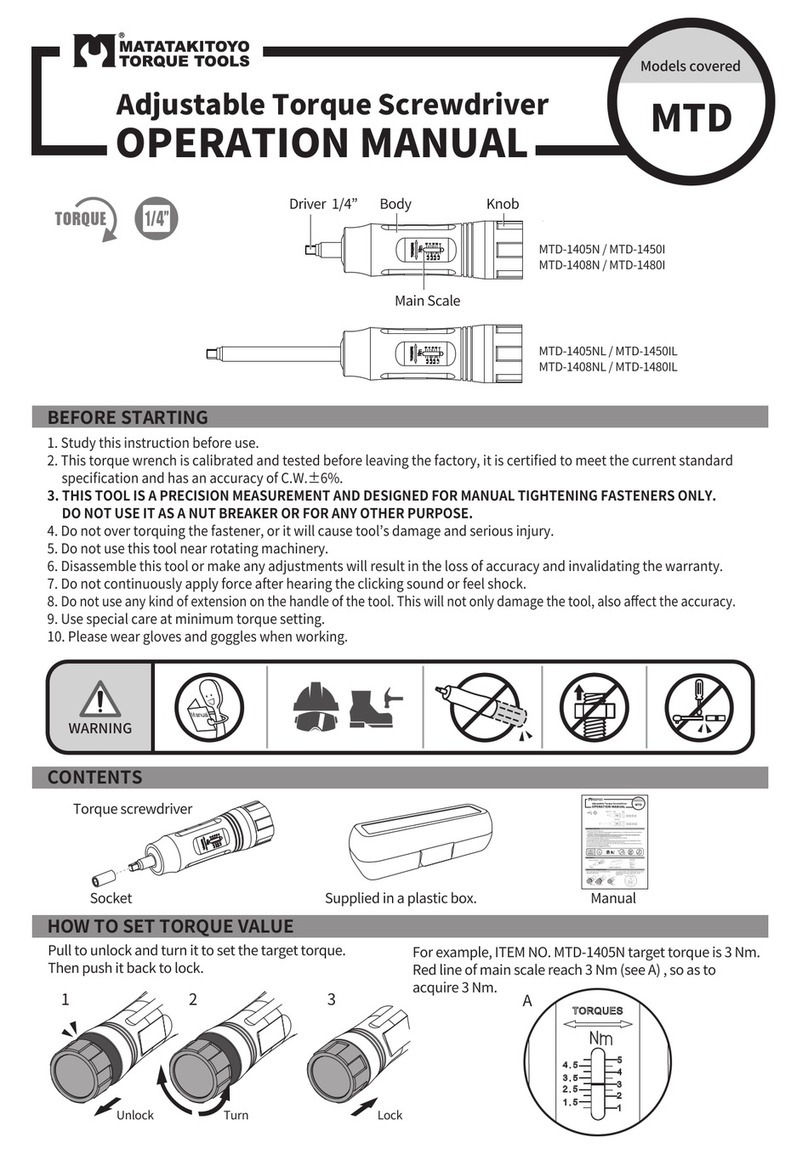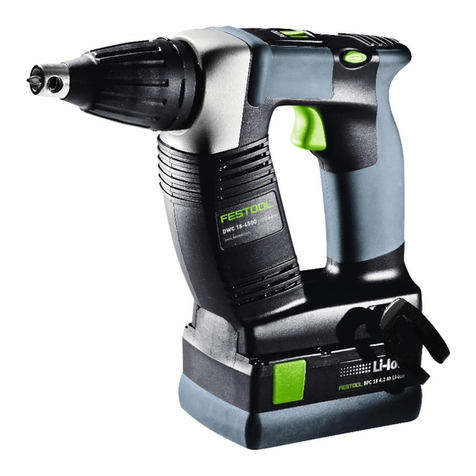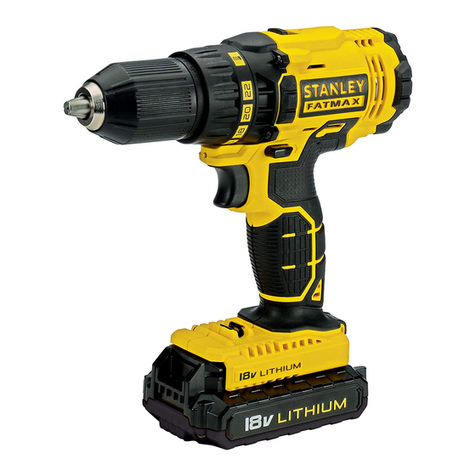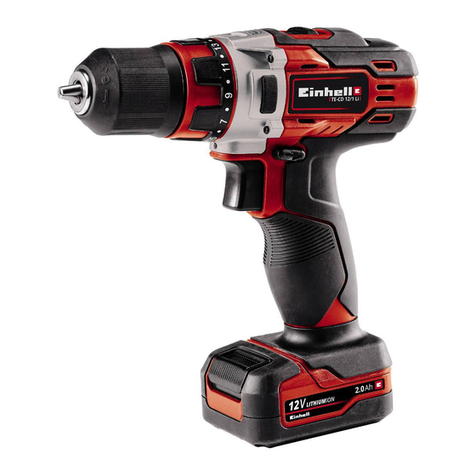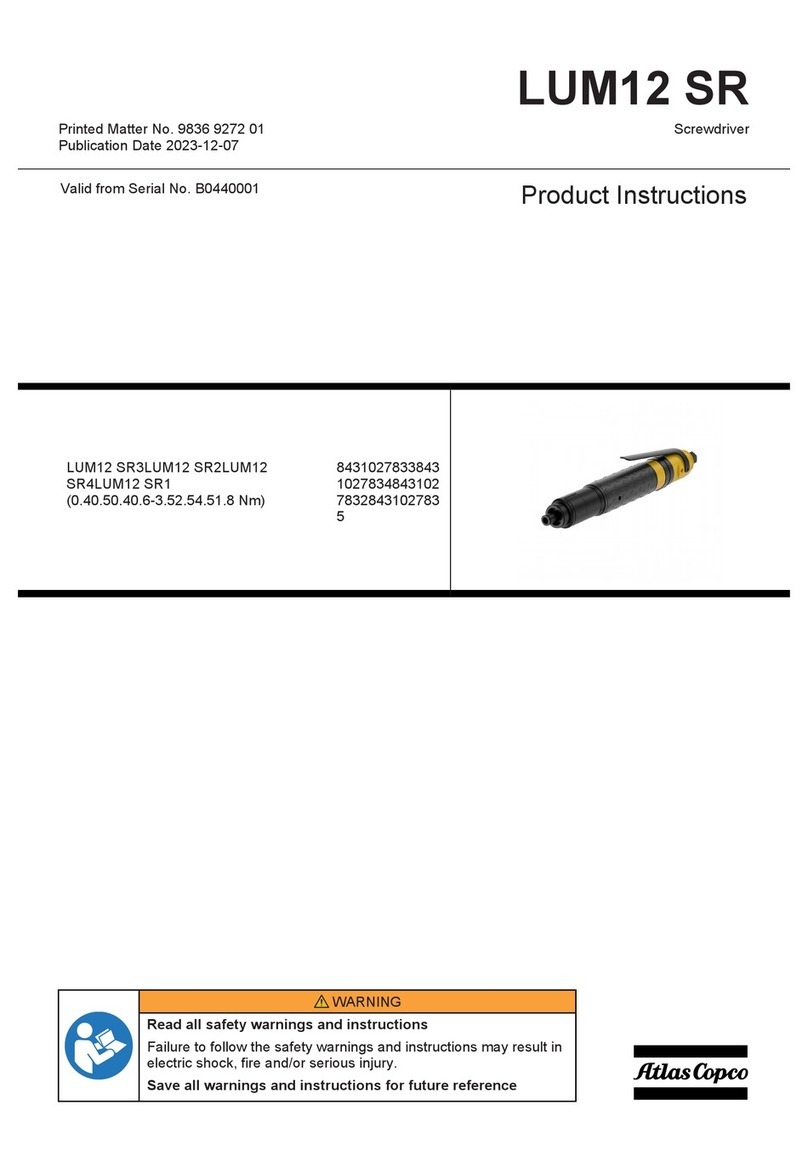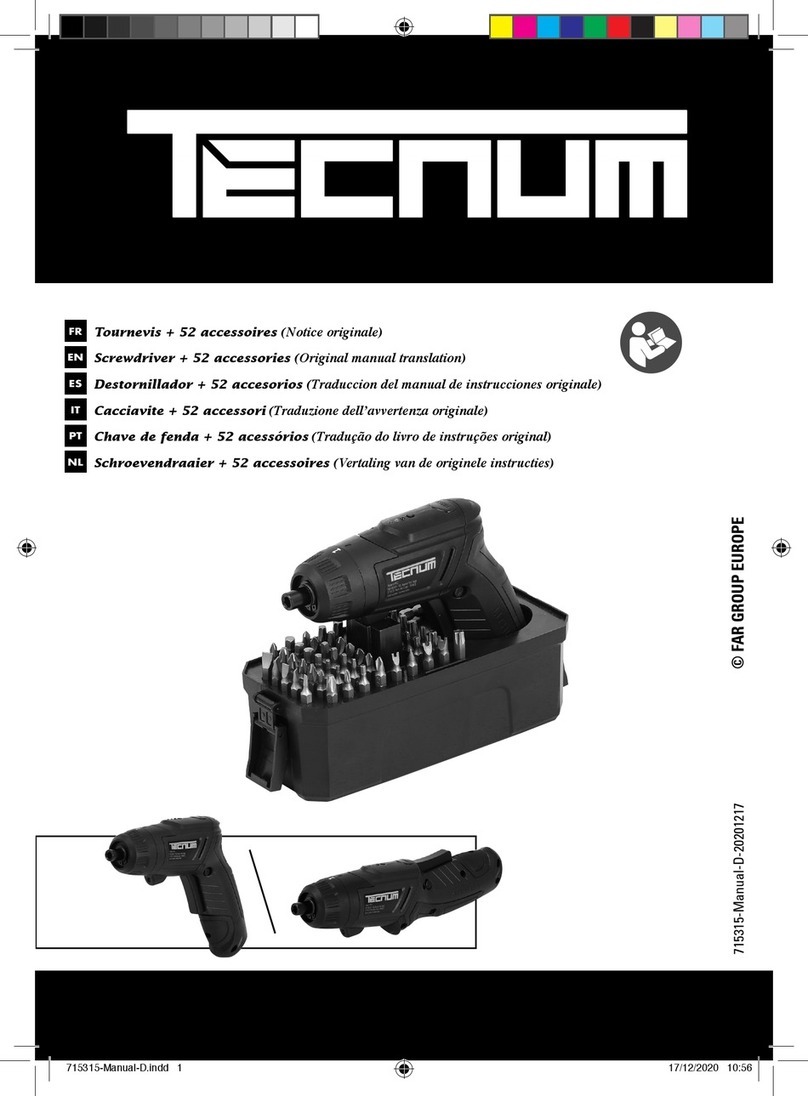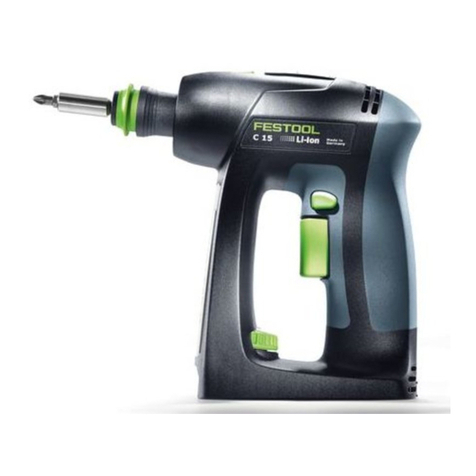
22
Werking van de omkeerschakelaar (Fig. 5)
Dit gereedschap heeft een omkeerschakelaar voor het
veranderen van de draairichting. Druk de
omkeerschakelaar in vanaf kant A voor rechtse,
kloksgewijze draairichting, of vanaf kant B voor linkse
draairichting.
Wanneer de omkeerschakelaar in de neutrale stand
staat, kan de trekkerschakelaar niet worden ingedrukt.
LET OP:
• Controleer voordat u gaat werken altijd eerst de
draairichting van het gereedschap.
• Gebruik de omkeerschakelaar alleen nadat het
gereedschap helemaal tot stilstand is gekomen. Als u
de draairichting verandert terwijl het gereedschap nog
draait, kan het gereedschap beschadigd raken.
• Zet de omkeerschakelaar altijd in de neutrale stand
wanneer u het gereedschap niet gebruikt.
INEENZETTEN
LET OP:
• Controleer altijd of het gereedschap is uitgeschakeld
en de accu ervan is verwijderd alvorens enig werk aan
het gereedschap uit te voeren.
Boorkop aanbrengen of verwijderen
Voor model DA330D (Fig. 6)
Om een boor aan te brengen, steekt u die zo ver
mogelijk in de klembus. Draai de klembus met de hand
vast. Steek de klembussleutel in elk van de drie
openingen en draai ze kloksgewijze vast. Zorg dat u alle
drie klembusopeningen in gelijke mate vastdraait.
Om de boor te verwijderen, draait u de klembussleutel in
slechts één enkele opening linksom en dan draait u de
klembus verder met de hand los.
Na het gebruik plaatst u de klembussleutel terug in de
opberghouder in het gereedschap.
Voor model DA331D (Fig. 7)
Houd het gereedschap stevig vast en draai de huls naar
links om de klauwen van de klembus te openen. Plaats
boor zo ver mogelijk in de klembus. Houd het
gereedschap stevig vast en draai de huls naar rechts om
de klembus vast te zetten.
Om de boor te verwijderen, houdt u het gereedschap
stevig vast en draait u de huls linksom.
Bussleutelhouder
Voor model DA330D (Fig. 8)
Om de bussleutelhouder te monteren, richt u het
haakgedeelte naar de behuizing. Vervolgens schuift u de
rails van de bussleutelhouder in de sleuven van het
gereedschapshuis totdat het met een lichte klik op zijn
plaats vastklikt.
Voor het verwijderen pakt u de bussleutelhouder vast en
trekt u die er uit.
BEDIENING
LET OP:
• Houd het gereedschap tijdens gebruik stevig met één
hand vast aan de handgreep van het gereedschaphuis.
Voor model DA330D (Fig. 9)
Voor model DA331D (Fig. 10)
Gewoon boren
Boren in metaal
Om te voorkomen dat de boorkop bij het begin van het
boren zijdelings wegglijdt, maakt u met een hamer en
een centerpons een inkeping precies op de plaats waar u
wilt boren. Plaats dan de punt van de boorkop in de
inkeping en begin met boren.
Gebruik bij het boren in metaal een smeermiddel.
Uitzonderingen hierbij zijn ijzer en koper, die droog
geboord moeten worden.
LET OP:
• Het boren zal niet sneller verlopen als u hard op het
gereedschap drukt. In feite zal dergelijk hard drukken
alleen maar leiden tot beschadiging van de boor,
mindere prestaties van het gereedschap en verkorting
van de levensduur van het gereedschap.
• Op het moment dat het boorgat doorbreekt wordt een
enorme wringende kracht uitgeoefend op het
gereedschap/de boor. Houd het gereedschap stevig
vast en let vooral goed op wanneer de boor door het
werkstuk heen breekt.
• Een vastgelopen boorkop kan eenvoudig verwijderd
worden door de draairichting te veranderen met de
omkeerschakelaar, om zo de boorkop los te halen.
Houd het gereedschap daarbij wel stevig vast, want er
is kans op een plotselinge terugslag.
• Zet kleinere werkstukken altijd vast in een bankschroef
of dergelijke veiligheidsklem.
• Als het gereedschap lang achtereen blijft draaien totdat
de accu geheel leeg is, laat u het gereedschap dan
eerst 15 minuten ongebruikt liggen, voordat u doorgaat
met een verse accu.
ONDERHOUD
LET OP:
• Zorg er altijd voor dat het gereedschap is
uitgeschakeld en de accu is verwijderd, voordat u
enige inspectie of onderhoud uitvoert.
• Gebruik nooit benzine, wasbenzine, thinner, alcohol en
dergelijke. Hierdoor kunnen verkleuring, vervormingen
en barsten worden veroorzaakt.
Om de VEILIGHEID en BETROUWBAARHEID van het
product te handhaven, dienen alle reparaties en alle
andere onderhoudswerkzaamheden of afstellingen te
worden uitgevoerd door een erkend Makita
Servicecentrum, en dat uitsluitend met gebruik van
Makita vervangingsonderdelen.

